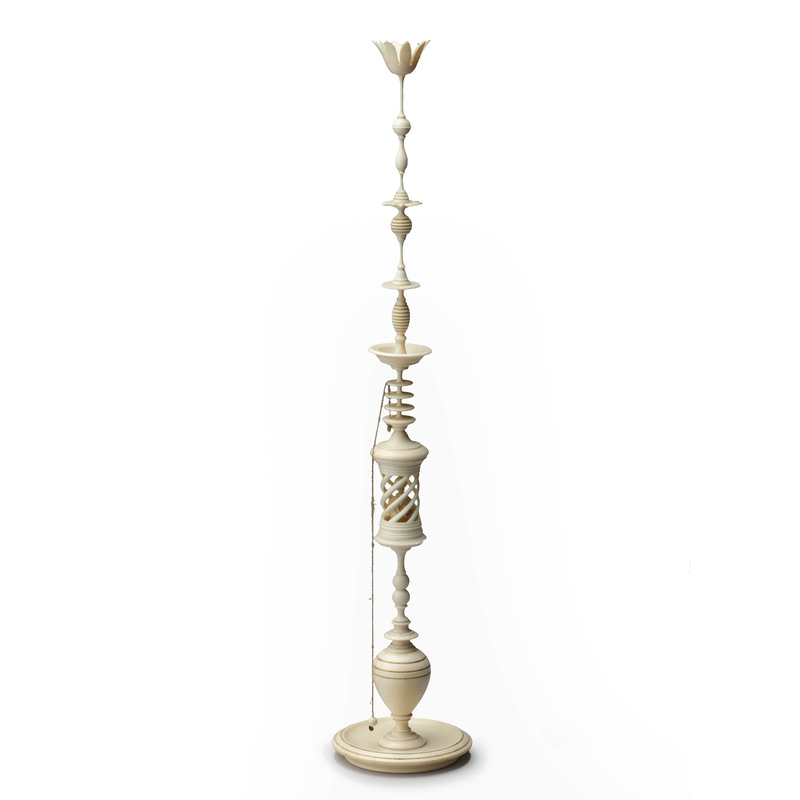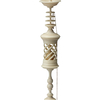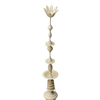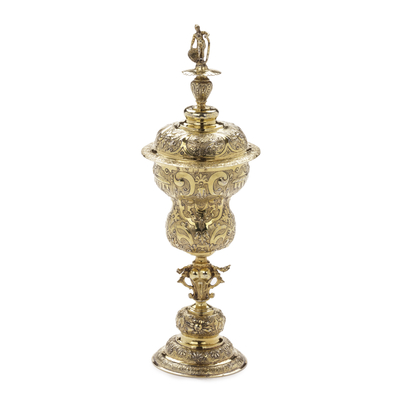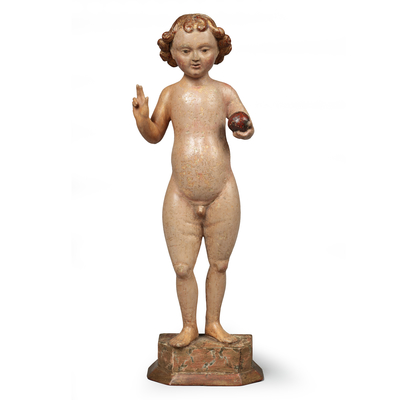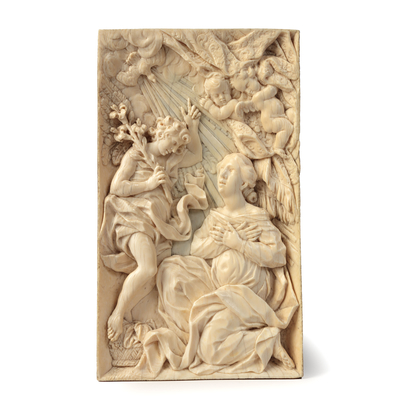Ivory spire
Global shipping available
- Origin
- Probably France
- Period
- First half 18th century
- Material
- ivory, string
- Height
- 43 cm
- Literature
L. E. Bergeron, Manuel du Tourneur, Paris 1796 (and second edition 1816, pl. XXI, 1991).
G. de Grollier de Servière, Recueil d’ouvrages curieux de mathématique et de mécanique, ou description du cabinet de Monsieur Nicolas Grollier de Sevière, 1719, fig.1a, 1.
G. Laue, Gedrehte Kostbarkeiten, Munich, 2004, pp. 46, 47, 72, fig. 16.
K. Maurice, Der drechselnde Souverän, Zurich, 1985, p. 112, fig. 123.
C. Plumier, L'art de Tourneur, Lyon, 1701 (reprinted Paris, 1749).
Questions about this object?
Please use one of the contact options below:
Description
This extraordinary and delicate ivory tower consists of a finely turned, thin stem with various disc and sphere shapes, with an open turned case under the centre containing a vase-shaped ornament. This decorative case required a great deal of craftsmanship; through a small opening, the thin ivory was cut and turned from the inside, a delicate and complex process. A thin wire with an ivory ball is attached to the tower. The intricate tower is crowned by an open flower. The object was made from a single piece of ivory and required not only a steady hand, but also an intellectual approach to design and a perfectly calibrated lathe.
From the sixteenth and seventeenth centuries, turning was a distinguished hobby, practised by European nobility, princes, and kings. The turning of ivory, using a mechanically powered lathe, was seen as an appropriate and virtuous pastime, in which the practitioner was trained in precision and concentration, and at the same time created fascinating objects which often served as (diplomatic) gifts or were part of a cabinet of curiosities. These objects fitted perfectly in the cabinets of curiosities; they combined craftsmanship and natural material with the growing knowledge of geometry. Craftsmen specializing in turning acted as teachers for the nobility, often staying at court. The turning was done mechanically with a lathe: a piece of ivory was fixed in the lathe, which could make the object move in two or three directions at the same time. The maker took a sharp object and held it to the rotating ivory. The different movements and directions of the mechanism allowed the maker to shape the object as desired. The craftsmanship of the maker, and in particular his or her geometrical and spatial insight, steady hand and precision, determined the complexity and sophistication of the final object. The mechanism of the lathe, which can be adjusted, makes these exceptional turned objects the first examples of ‘machine-generated art’.
Cites no. 22NL307754/20
